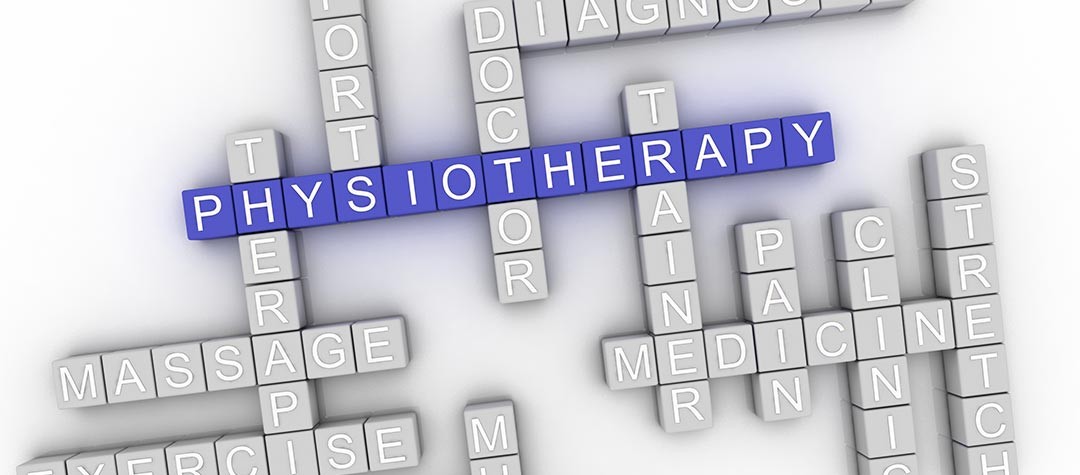Hip pain is common among athletes, particularly runners. Find out the causes of lateral hip pain and how it can be treated.
There are two main structures that cause pain at this point in the hip. First it is trochanteric bursitis and second is glut medius tendon inflammation or strain.
The trochanteric bursa is a lovely name for a fluid filled sack that sits on the outside of your hip bone. It takes the friction of the iliotibial band (ITB) sliding back and forth across the pointed edge each step you take. It can become inflamed and painful with tight iliotibial bands, pelvic issues, direct trauma like a fall or prolonged sitting in a tight seat.
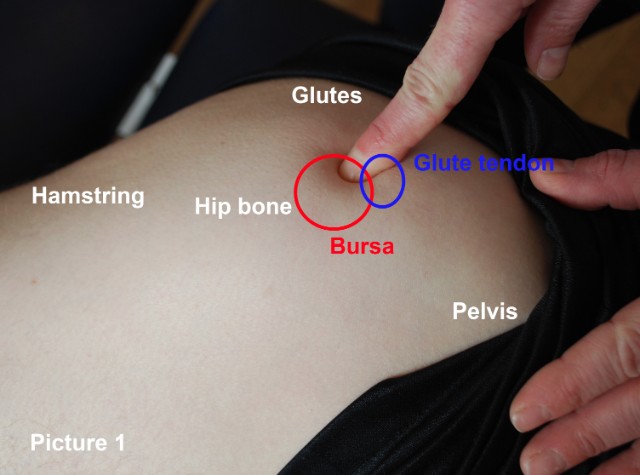
The pain from the bursa is very local to the spot (see Picture 1) - often just behind the point of the bone, although when it is very sore it can radiate down the leg.
The glute tendon is deeper to the near the surface point of the trochanteric bursa. If you are having to dig deep to feel the sore bit, it is likely to be the tendon.
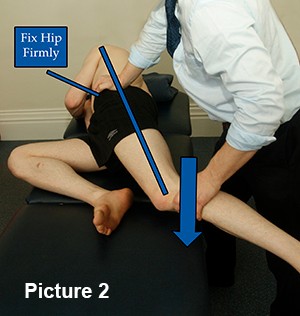
Sleeping on the bursa it is difficult and it is also often sore when getting up in the morning before easing off, but sore again to try and run and worse afterwards. Typically however the tendon is ok to sleep on but is stiff and sore in the morning.
The basic signs are where it is painful, the tightness of ITB and the weakness of the gluteus medius.
The classic Obers Test (as illustrated in Picture 2) is used to test ITB length and the leg should be able to drop to the floor/bed without limitation. If it hovers then it is tight.
How to work on your ITB
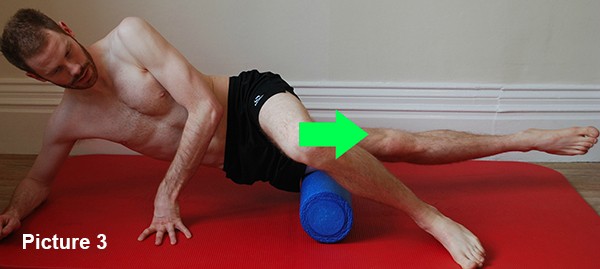
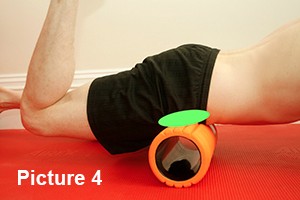
There is some debate about the best way to lengthen the ITB. My view is that massage (deep) and rolling on hard foam rollers is the best way to increase the extensibility of this very fibrous tissue. I have yet to find a more effective way to lengthen what is an elastic structure.
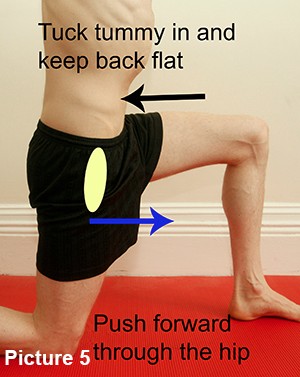
Stretching does not work in practice. The confusion seems to be in the idea that we are lengthening the ITB. In fact we are altering how elastic the fascia is and how the fibres slide against each other, not lengthening it.
It is important to stretch or lengthen the hip flexor, especially the Tensor fascia lata. This is found at the top front of the hip (as highlighted in Picture 4.) Rolling it is like the ITB, but more belly down as shown in the picture. Stretching it has to be done with the bum tucked under to be effective.
All these have to be performed at least twice a day for two minutes each.
Gluteus medius strength test
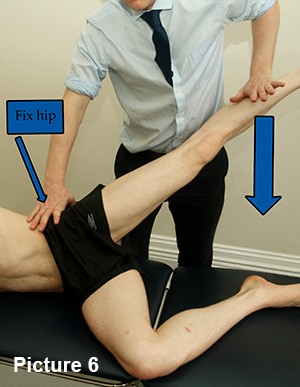
A simple test of glut medius strength is where you enlist the help of a friend. You lay on your side with the bottom leg bent up and the top leg is lifted straight up and back (see Picture 6.) The leg needs to take a line behind that made from the shoulder and hip bone. Your friend then tries to push the leg directly down from the ankle. Good strength is when the leg cannot be moved. If the leg can be pushed down then the glut medius is not strong enough. It is possible that the test will be sore if there is significant tendon inflammation or strain.
Simple gluteus medius strengthening
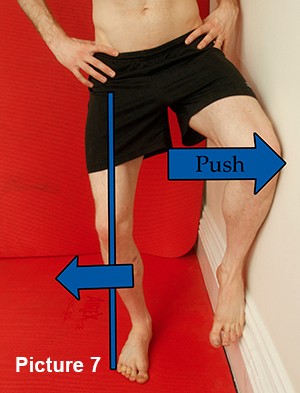
Stand sideways to a wall, with the outermost foot parallel to the wall of the hip you want to work on (as in Picture 7.) The knee nearest the wall is bent up and placed against the wall. The standing knee is bent so that the kneecap is in line with the toes as you look down. The knee (not the foot) is then turned out until you can see most of the foot on the inside of the knee. Hold this position and press the knee against the wall hard into it so you are bracing yourself.
You will find that after a short moment you will feel the muscles in the outer hip/bum working. There will be other aches in the quads - nerve mind though! You should aim to hold this position for two minutes and build up to five minutes, twice a day.
A further gluteus medius exercise specifically aimed at loading the tendon eccentrically is the Hip Dip (see Pictures 8 and 9.) This is where you stand on the edge of a step on the affected leg. Keeping the knee locked you allow the hip to drop down slowly through the hip joint and then drive the hip/pelvis back up. 3 times a day 3 x 25 into some soreness if possible.
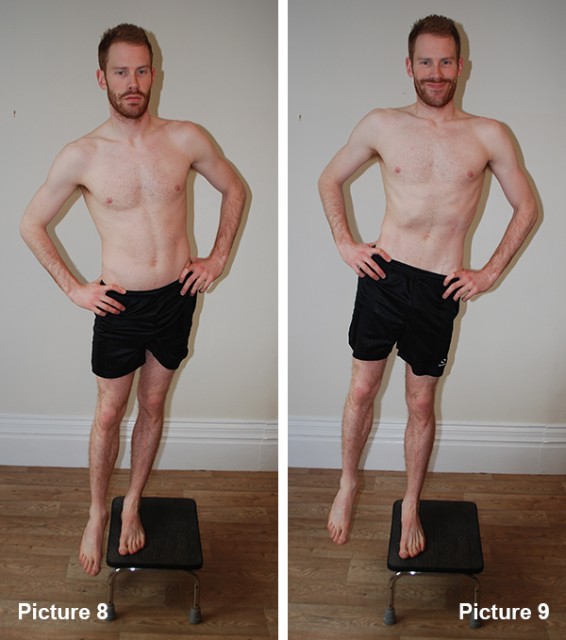
Ice applied four times a day or 15 minutes or so can also be helpful. Lay the ice on you - not you on the ice, as this will cause ice burns. Anti-inflammatories are also useful. If running really upsets it, then a week or so off will be required.
If it does not settle over a week then seek some advice on the function of the pelvis from a good running physio and to clarify the diagnosis. Manual therapy may be required and in the most stubborn cases injections may be necessary.

